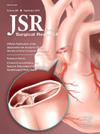弥合学习差距:外科学员通过高保真模拟磨练血管创伤技能
IF 1.7
3区 医学
Q2 SURGERY
引用次数: 0
摘要
血管内入路和亚专科血管护理的发展显著减少了普通外科住院医师在创伤中接触基本血管技术的机会。这导致住院医师毕业生在处理基本血管紧急情况方面缺乏准备。开放式手术模拟系统(OS3)是一种高保真的创伤手术模型,允许通过动手实践获得技能。方法采用5点李克特量表进行课前和课后问卷调查,评价OS3外科技能课程对住院医师自我评估的知识、技术技能和信心的影响。手术包括复苏开胸术、剖腹探查术、脾切除术、肝外伤处理、小肠切除术和腹膜后探查。运用线性回归模型分析了技能自我评估、感知挑战和技能习得课程效用的决定因素。结果183名学员完成了模拟和问卷调查。每增加两年以上的研究生水平与知识、技能和经验的自我评估增加有关(P <;0.001);先前的高级创伤手术管理和高级外科技能暴露在创伤课程的参与。无论训练水平如何,血管分流插入、主动脉交叉夹和血管吻合一直被列为最具挑战性的手术。总体而言,OS3模拟显著提高了受训者对实施复苏开胸术、剖腹探查术、脾切除术、肝外伤处理、腹膜后探查和小肠切除术的信心(P <;0.02)。结论:当自我评估创伤的技术技能时,几乎一半的受访普外科实习生描述了基本血管手术(如分流和主动脉交叉夹紧)的重大困难。OS3可能允许在这些和其他程序中进行一致且易于重复的培训,以减轻这种信任差距。本文章由计算机程序翻译,如有差异,请以英文原文为准。
Bridging the Learning Gap: Surgery Trainees Hone Vascular Trauma Skills via High-Fidelity Simulation
Introduction
Advancing developments of endovascular approaches and subspecialty vascular care have significantly diminished general surgery residents' exposure to essential vascular techniques in trauma. This has led to a deficiency in preparedness among residency graduates in handling basic vascular emergencies. The Open Surgical Simulation System (OS3) is a high-fidelity trauma surgery model that allows for skill acquisition through hands-on practice.
Methods
We evaluated the effect of a new OS3 surgical skills curriculum on residents' self-assessed knowledge, technical skills, and confidence using precourse and postcourse surveys with 5-point Likert scales. Procedures performed included resuscitative thoracotomy, exploratory laparotomy, splenectomy, liver trauma management, small bowel resection, and retroperitoneal exploration. Determinants of skill self-assessments, perceived challenges, and course utility for skill acquisition were analyzed using linear regression modeling.
Results
One hundred eighty-three trainees completed the simulation and surveys. Each increasing postgraduate year level above 2 was associated with increases in self-assessment of knowledge, skills, and experience (P < 0.001); prior Advanced Trauma Operative Management and Advanced Surgical Skills for Exposure in Trauma course participation was not. Vascular shunt insertion, aortic crossclamp, and vascular anastomosis consistently ranked among the most challenging procedures regardless of training levels. Overall, the OS3 simulation significantly increased trainees’ confidence in performing resuscitative thoracotomy, exploratory laparotomy, splenectomy, liver trauma management, retroperitoneal exploration, and small bowel resection (P < 0.02).
Conclusions
When self-assessing technical skills in trauma, almost half of surveyed general surgery trainees describe significant difficulty with essential vascular procedures such as shunting and aortic crossclamping. The OS3 may allow for consistent and readily reproducible training in these and other procedures to alleviate this confidence gap.
求助全文
通过发布文献求助,成功后即可免费获取论文全文。
去求助
来源期刊
CiteScore
3.90
自引率
4.50%
发文量
627
审稿时长
138 days
期刊介绍:
The Journal of Surgical Research: Clinical and Laboratory Investigation publishes original articles concerned with clinical and laboratory investigations relevant to surgical practice and teaching. The journal emphasizes reports of clinical investigations or fundamental research bearing directly on surgical management that will be of general interest to a broad range of surgeons and surgical researchers. The articles presented need not have been the products of surgeons or of surgical laboratories.
The Journal of Surgical Research also features review articles and special articles relating to educational, research, or social issues of interest to the academic surgical community.

 求助内容:
求助内容: 应助结果提醒方式:
应助结果提醒方式:


